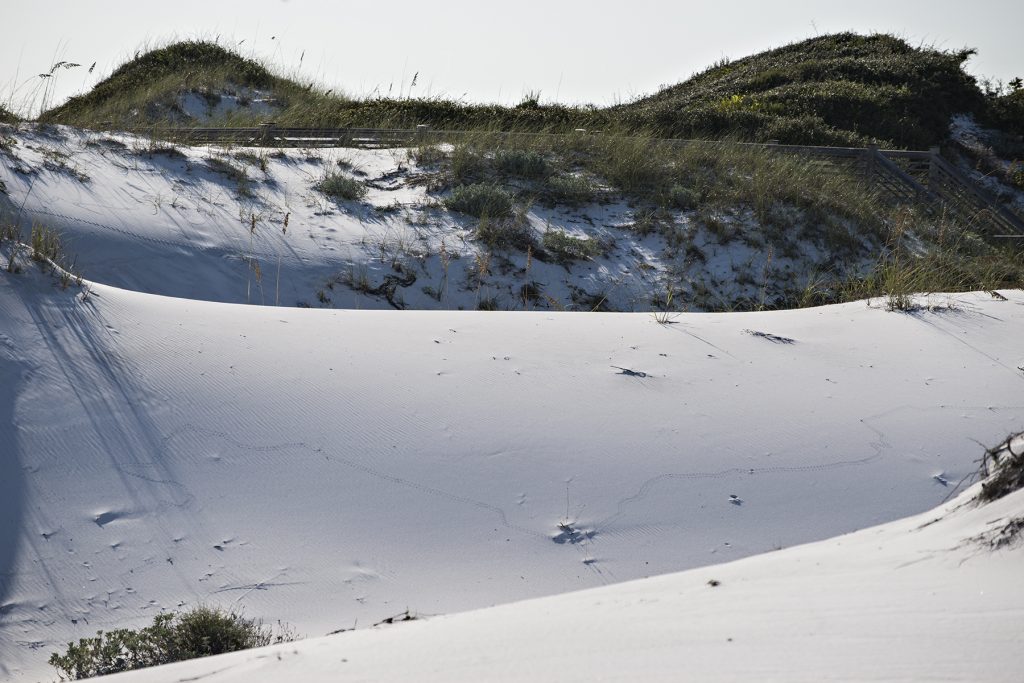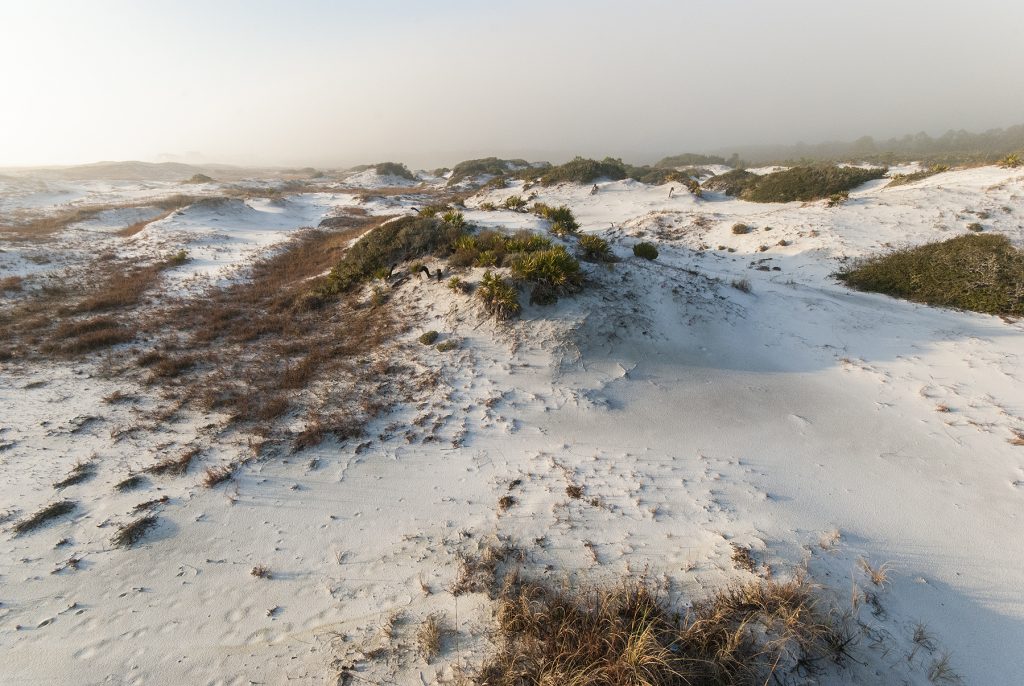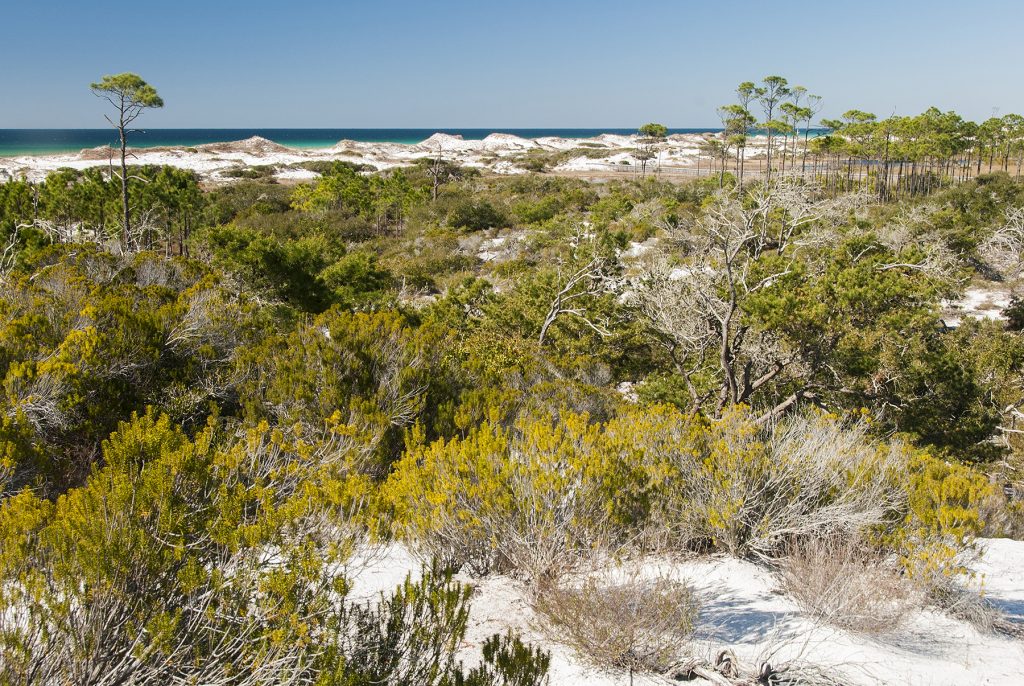Dunes along the Emerald Coast are composed of quartz sand originating from the Appalachian Mountains in Northern Georgia. Longshore drift transports the white sand Westward along the Gulf Coast. This well-drained soil has low fertility and some salt content. Dunes are ever-changing from wind and wave action coming in off the Gulf of Mexico.
Primary dunes, closest to the water, are populated by sea oats, small herbaceous perennials, and low-growing vines. Secondary dunes are more stable and often taller due to their population of short, scrubby, rounded shrubs with deep root systems that hold soil in place. This plant community is highly drought and salt-tolerant from the harsh desert-like conditions.





Hydric Hammocks have fertile soils populated by dense hardwoods. Although species composition varies, hydric hammocks have closed hardwood canopies, open understories, and sparse groundcover plants. These plants are not drought or salt tolerant.; acidic soils with lots of organic matter retain moisture from seepage and temporary flooding.

Resilient in nature, the maritime forest is the maturest community of the dune sequence. Calmer conditions create soil stability allowing for larger trees to populate the area. Soil is composed mainly of sand with some shell fragments resulting in a neutral to slightly alkaline pH. Limited to well-drained sites, plants are salt, wind, and drought-tolerant; some plants can even tolerate partial shade. Compared to primary and secondary dunes, the soil is relatively fertile and moist due to surface litter accumulation.


A pine-dominated landscape generates an acidic soil composed of sand and peat low in organic matter. An impervious layer of clay several feet below the surface, along with the Sun's intensity, determines seasonal moisture content. Moisture levels fluctuate from dry during winter to a growing season saturated in water. Due to the sparse cover of pine trees, plants cannot tolerate heavy shading. Additionally, this community is fire-dependent, inhibiting the growth of hardwoods in this region.

Closed-canopy forests with well-drained, loamy, sand-clay soil characterize the Northern regions of our watershed. The fertility and drought-resistance of upland mixed forests attracted farmers who transformed many stretches into agricultural fields and pastures. Pines commonly populate younger sections, while mature sectors grow hardwood species as forest fires are a rare occurrence. The understory is home to shade-tolerant species that do not fare well with flooding.
Scrub forests have many gnarled, woody plants functioning as its canopy. Intense forest fires occur naturally within eight-decade intervals. The soils consist of well-drained, deep, acidic sand with no organic matter besides surface litter. Infertile soils restrict this community to salt, shade, and frost tolerant species. The understory is packed with small woody evergreens and herbaceous perennials and often transitions into dune sequences.


Sandhills cover much of Eglin reservation in Okaloosa and Walton counties. Sparsely scattered pine trees function as the canopy permitting sunlight to reach the dense groundcover of grasses and short woody evergreens. Plants adapted to the soil's infertility and low moisture retention. Additionally, plants are tolerant of frequent fires that occur in 1-10 year intervals. Sandhills often transition into pine flatwoods.

Wetland swamp forests reside alongside streams and rivers where they remain flooded for extended periods. This community of mixed deciduous hardwoods often exhibit buttressed roots. The understory and groundcover are usually sparse. Stagnant water allows for clay, silt, and organic matter to settle out of the water. A lack of oxygen in the water leads to peat accumulation. During summer months, swamps may be devoid of water entirely. Still, it is difficult for many plants to establish in the compact sediments.


Citations:

